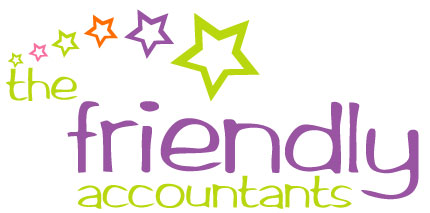The tax benefits of EIS (Enterprise Investment Scheme) are a useful incentive for attracting company investment. Especially if it is still in the start-up phase or has previously raised funds under the Seed Enterprise Investment Scheme (SEIS).

Introduction
To obtain the tax benefits of EIS, qualifying shares in a qualifying company must be issued to a qualifying investor. Moreover, there are also some general requirements to be fulfilled to obtain the relief.
What are qualifying shares?
In order to achieve the tax benefits of EIS, shares must be fully paid up ordinary shares. Furthermore they must be subscribed for rather than purchased 'second hand'. Additionally, when issued and for the next three years they must not have any current or future:
Furthermore, any free bonus shares issued in proportion to the existing shareholding, are simply treated as part of the original shareholding. Therefore, these 'new' shares will continue to benefit from Income Tax relief, Capital Gains Tax (CGT) and deferral relief.
Additionally, they will be exempt from CGT on disposal. Equally important though is that the qualifying conditions continue to be met throughout the three year period referred to above.
What's more, care should be taken when making any future changes to your company's articles or share capital. This is because they could inadvertently provide the shares with preferential rights. As a result, relief might be withdrawn as evidenced in this recent tax case .
Definition of a qualifying company
The company issuing the shares must either be a qualifying trading company or the parent of a trading group. The majority of trades are qualifying, unless they fall within the category of excluded activities. For example property development.
Research and development which is intended to lead to a qualifying trade can also be a qualifying activity. An example of this would the creation of an intangible asset such as 'know-how'.
Additionally, your company must meet the following qualifying criteria:
The 'risk to capital' condition
Like the SEIS rules this condition is aimed at excluded artificial investments with no real prospect of risk from benefitting from the tax advantages. However, it is not intended to affect genuinely entrepreneurial start-ups. What's more, HMRC consider all factors together in the round when determining application of these anti-avoidance rules.
Who is a Qualifying Investor?
An individual is a qualifying investor if:
Connected individuals
Between the period commencing two years pre issue of EIS shares and the later of three years post issue, and the date your company commences trading, an individual investor cannot be ‘connected’ with the qualifying EIS company. This means they cannot:
Who are associates?
‘Associates’ include business partners plus the trustees of any settlement of which the investor is a settlor or beneficiary. Additionally, they can include the lineal relatives: e.g. spouses and civil partners, parents and grandparents, children and grandchildren. However, brothers and sisters, cousins, uncles and aunts are not considered associates.
What about directors?
The rules regarding directors need careful attention. This is particularly where they're intending to obtain the tax benefits of EIS. We'd recommend being a shareholder prior to directorship. Especially, if payment for services is intended.
General Requirements
Additionally, there are a number of ‘general requirements’ to be met in order to qualify for EIS relief.
Investment limits
Companies
The maximum investment a qualifying company can receive in any year is capped at £5 million. This is increased to £10 million for 'knowledge intensive' companies or 'KIC's'. Equally important is that this limit is applied by adding all relevant investments in a 12-month rolling period. In other words, it not by reference to calendar year or the company's accounting period end.
There is also a maximum lifetime limit. Therefore, relevant investments can't exceed £20 million for KIC's and £12 million for other companies over their lifetime.
Individuals
The maximum investment an individual can make is £2 million, provided at least £1 million is invested in KICs.
Individuals who subscribe for shares in an EIS qualifying company may claim Income Tax relief of 30% on the cost of the shares. This relief is offset against the individual’s Income Tax liability for the year in which the investment is made.
What's more, there is no requirement for the individual to be UK resident, they simply need a UK Income Tax liability.
Three year holding period
The individual must retain the shares for a minimum of three years if the company is trading when the shares are acquired in order to retain the tax benefits of EIS.
Because a qualifying business activity includes preparing to trade (for a period of up to 2 years), the three year holding period starts from the date trade commences. This would apply if the company was not trading when the shares were acquired. As a result, this can extend the required holding period to 5 years. This would be the case if the company starts trading after 2 years of preparing to trade.
If a share disposal occurs within this minimum holding period, the relief will be withdrawn. The exception being where the disposal is to a spouse or civil partner. In which case the spouse or civil partner is regarded as subscribing for them originally.
If the disposal proceeds are less than the relief then the claw back is capped at the level of the proceeds. This means an element of relief will be retained.
The amount of relief here is the amount utilised by the investor against Income Tax on the share acquisition. It is not the total amount invested.
Timing of investment
Companies must raise their first investment under EIS within seven years of making their first commercial sale or 10 years if the company is a KIC.
No age limit applies to company investment raises where the amount of the relevant investment together with any other relevant investments made within a 30-day period is at least 50% of the company’s annual turnover. This is averaged over the previous five years, plus the company uses the funds to enter into a new product/geographical market. Fianlly, the company has previously met this condition (entering into a new market etc) and at least some of the funds will be used for the same activity.
Use of funds raised and time limit
Any funds raised via a EIS issue must be used for a qualifying business activity by either of the following dates:
It is a specific requirement that money raised from EIS investments must be used to promote your company’s growth and development. Therefore because this phrase is not defined it must take its ordinary meaning. In other words, must be used to do more than maintain your company’s current status.
Therefore in order to obtain the tax benefits of EIS the capital raised cannot simply be used to fund pre-existing day-to-day expenditure. Moreover to acquire all or part of an existing business. Therefore repayment of a loan is not sufficient by itself to meet the condition. HMRC consider that growth indicators would be increased revenues, customer base and/or number of employees.
Withdrawal of relief
Income Tax relief can be withdrawn in a later tax year where the ongoing requirements are not met. These are clearly set out in the legislation. For example the investor becomes connected or the company ceases to be a ‘qualifying’ company.
Capital Gains Tax Benefits
No CGT is charged on a EIS share disposal, after the minimum three year holding period. This is provided income tax relief was claimed on the original investment. Additionally the company should have been trading at the time of the share acquisition. Furthermore this holding period commences the date the company starts trading. Although only if that start date is 2 years after the share issue and the company has been preparing to trade.
If a share disposal occurs within the minimum holding period any gain is not exempt. Where Income Tax relief was not given on the entire EIS subscription, there is a pro--rata restriction applied to the exemption. The only exception is where full Income Tax relief was unavailable because the taxpayer’s Income Tax liability was too low.
Deferral relief
CGT can be deferred if sale proceeds are invested in EIS shares, even if the investor is connected with the company
A capital gain can be deferred from the disposal of any asset. However, the share investment must take place in the period of one year before, or three years after the disposal of the asset concerned. In other words, the gain to be deferred must be made in the period three years before or one year after the EIS investment.
There is no upper limit on the total amount of qualifying reinvestments which can be made in a year, but there is a single company restriction of £5m
A deferred gain can come back into charge if the EIS shares are disposed of, other than to a spouse or civil partner, the shares cease to be EIS qualifying, the investor becomes non-resident .Although there is a limited exception where someone becomes non-UK resident due to employment. This revived gain can be deferred by making further qualifying EIS investments and claiming relief again.
Loss Relief
If EIS shares are disposed of at a loss relief is available after taking into account any Income Tax relief previously claimed. The resulting loss can be offset against income for that tax year and the previous tax year. This is instead of being offset against capital gains.
A loss can be claimed on the disposal of EIS shares even where the Income Tax relief has not been withdrawn. The loss is reduced by the amount of any Income Tax relief which remains attributable to the shares sold.
HMRC Advance assurance
Given the complexities surrounding the tax benefits of EIS this process should be considered as an opportunity to obtain HMRC assurance that EIS relief applies. Moreover particularly where anti-avoidance provisions might apply.
For more useful information, check out our Ebooks here.
And if you'd like to know how we can help you with all of this, or with anything else, feel free to give us a call on 01202 048696 or email us at [email protected].
Alternatively, please feel free to complete our Business Questionnaire here
